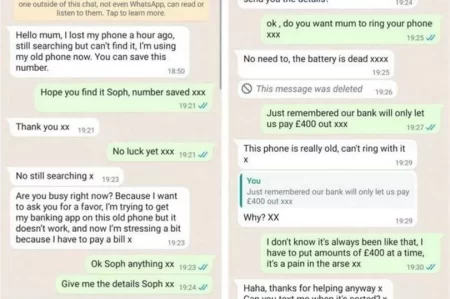Whatsapp Spam Messages Example.Hackers can use WhatsApp to launch a wide variety of attacks. They can use it to send fake files, try to steal passwords, or even send spam messages . In this article we are going to talk about the latter case. We’re going to explain why it’s a major security issue and, most importantly, what you can do to prevent it from happening and stay as safe as possible. You will see that it is simple, as long as you carry out a series of steps.
Whatsapp Spam Messages Example You Must Know

But what is spam? It is basically a deceptive advertising message that can reach you. Sometimes they send it by mail, SMS, social networks… And yes, also by WhatsApp. They may tell you that it is a campaign with a supposed offer, discount code or whatever, but it is actually a scam.
Spam messages are also starting to invade WhatsApp , the popular instant messaging app, acquired a few years ago by the Facebook Inc group.
Spam: from email to WhatsApp
We used to receive junk mail on our personal mailboxes but with the success of WhatsApp, even spam is changing. In fact, it happens more and more often to receive messages from strangers and potentially harmful contents that should not be underestimated can be hidden inside them. By clicking on some links external to the app, it is also possible to be robbed of the data we have on the smartphone or of the telephone credit.
Appearance of received spam messages on WhatsApp
Spam messages received on WhatsApp look completely normal but the content is absolutely harmful. Whether they come in the form of advertisements or via chat, the only way to stop this wave of viruses is to quickly identify the number sending these messages and block them.
How to block spam: Facebook’s commitment against spammers
Blocking incoming spam messages on your WhatsApp is very simple because the app’s developers have recently developed a particular algorithm capable of stopping potentially harmful messages, without reading the content of users’ conversations. In practice, the system detects suspicious movements when a subscriber repeatedly sends the same message to a user and automatically blocks it. By also analyzing the Internet Service Provider from which the suspicious chat originates, the author of the message will be immediately stopped to avoid damage and protect your data.
How to delete spam on iPhone
If you are an iOS user:
- open the messaging application and click on the number from which you received the Whatsapp spam messages .
- At this point you will be able to choose between two different options: “Report Spam and Block” or “Not spam. Add to contacts”.
- If you don’t have this contact registered in the list and you have an inkling that it might be something suspicious, click on “Report Spam and Block” and another window will open.
- Finally, click on “Ok” to confirm your action and you will no longer receive instant messages from that number.
How to get rid of spam on android devices
Now let’s see how to get rid of spam on Android devices.
- First make sure you have the latest updated version of WhatsApp where you will find the “spam blocker” function and if not, download it now from the Google Play Store.
- Then open the application and click on the unwanted chat.
- Again you will have to choose between “Report spam and block” or “Not spam. Add to contacts”.
- Click on the first option, then on “Ok” on the confirmation window that will open and that’s it.
By following these simple tips, your data will be protected and you will no longer receive spam from malicious people who want to access your information on your smartphone and in WhatsApp.